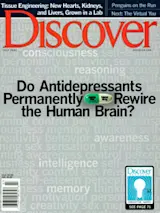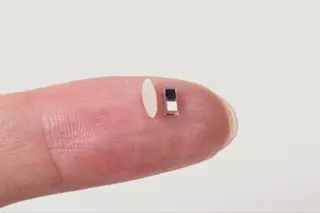2001 Awards IndexEditors' choice ElectronicsTransportationHealthEntertainmentAerospaceCommunicationsEnvironmentFinalistsThe Christopher Columbus Foundation Award




EDITOR'S CHOICE

LAURENCE M. CORASH

CERUS CORPORATION


CONCORD, CALIFORNIA




HELINX, BLOOD PURIFICATION TECHNOLGY


On a bench top in hematologist Larry Corash's lab sits a white plastic box 31/2 feet long and 1 foot high, sporting a control panel and a computer screen. Corash slides a tray out of the box, lays two plastic bags of blood plasma on it, closes the tray, hits a button, and waits. In just three minutes the box hands him the purest plasma on Earth. Every blood-borne disease-causing virus and bacterium lurking in it has been destroyed. "The bugs," as Corash calls them, are dead.
Each year, 90 million units of blood are siphoned out of the arms of willing donors in service to the sick. Blood banks screen each pint for hepatitis B and C, HIV, and syphilis. But they do not check for pathogens that cause other diseases, including malaria, hepatitis E and G, herpes, and Lyme disease. And it's downright impossible to check for emerging pathogens. So, in thousands of cases, the sick only get sicker. The risk of getting a viral infection from a transfusion of one unit of blood is 1 in 34,000, and the risk of a bacterial infection from a platelet transfusion is 1 in 1,700. Moreover, we are all vulnerable to whatever pathogen arises next, which could conceivably be more devastating than HIV.
Helinx blood purification boxes will change all that. Corash, 57, recipient of the Discover Editors' Choice Award, and his partners at Cerus Corp., John E. Hearst and Steve Isaacs, both chemists, have perfected a system that will make it possible for doctors to use every available drop of blood collected without fear of spreading infection. Technicians could be laundering blood in Europe as early as next year, the year after in the United States. "The device we're using today is kind of fancy," Corash says. "It has bar-code reading capacity and other things, but the first one we made, out of UV bulbs and parts from a hardware store, cost $75."
The tiny heroes that power this technology are psoralens (SOAR-uh-linz), chemical compounds commonly found in fruits and vegetables, including figs, turnips, and citrus fruits. Released into a batch of human blood, psoralens migrate to and begin harmlessly orbiting DNA and RNA molecules. The three components of blood that are transfused— red blood cells, platelets, and plasma— do not contain DNA, so any of its helices paddling about in a pint may be harmful. Corash's team observed that when a bag of blood plasma or platelets is slipped under an ultraviolet light, psoralens bond to the rungs of each double helix— and don't let go. (Because red blood cells absorb UV light, the team members refined their technique, developing another compound that is activated not by light but by a shift in pH.) The psoralen molecule adheres to two of the four bases that make up DNA: One end of the molecule grabs cytosine; the other seizes thymine. This effectively disables the DNA, a process Corash refers to as "zipping up the molecule." Unable to split in two, DNA cannot replicate; as a consequence, the bacteria dies and viruses are immobilized, while the therapeutic properties of the blood remain intact. The only blood components that contain DNA are white blood cells, but blood banks routinely irradiate donor pints with gamma rays to kill off these cells because they can trigger a rejection response in their new host. Unfortunately, that procedure isn't foolproof. But Helinx is.
With Helinx, no blood bank will ever be forced to toss out a pint of blood. That pleases Corash immensely. Back in the 1980s, he was the chief of hematology at the National Institutes of Health and witnessed firsthand the terrible scourge of transfusion-transmitted AIDS. He lost a surgeon friend to the disease because of tainted blood. "It's been gratifying," he says of his team's work. "We walk around thinking that when we need blood it will be there, and it will be safe. Now we can be sure."














